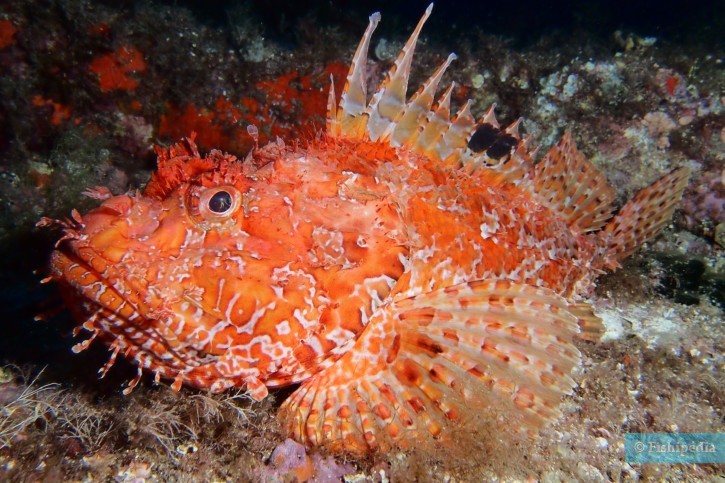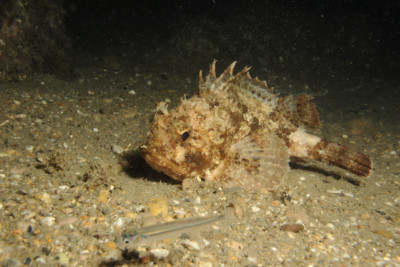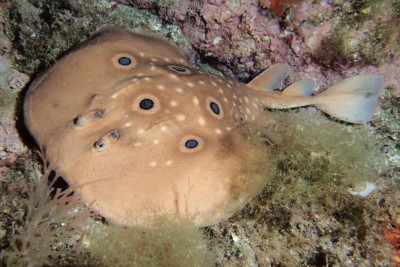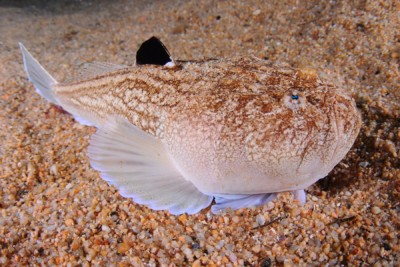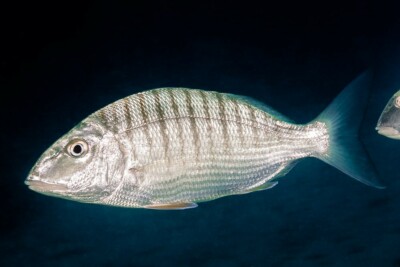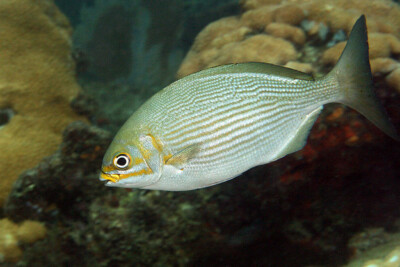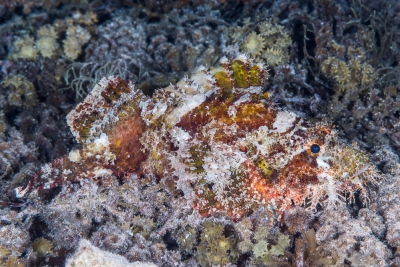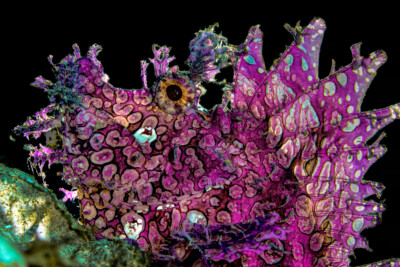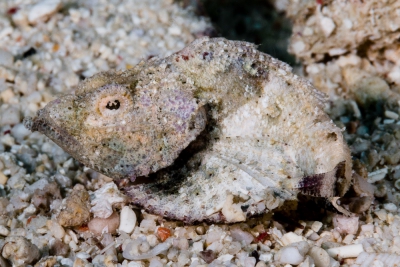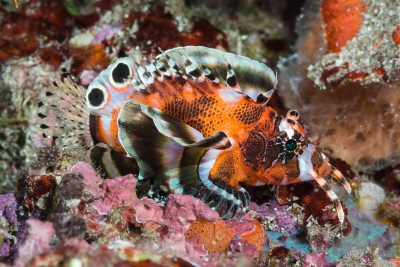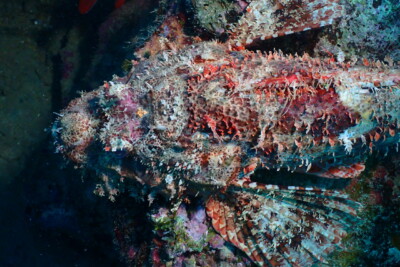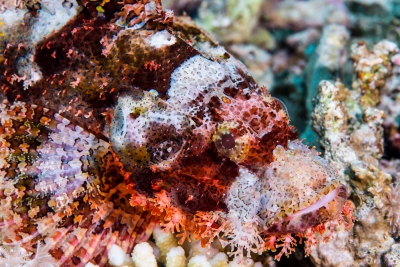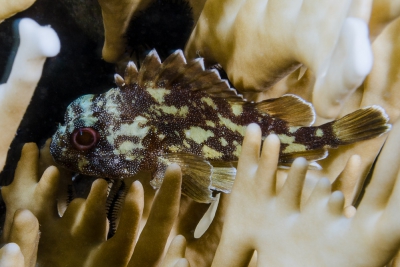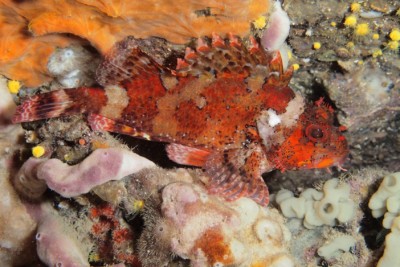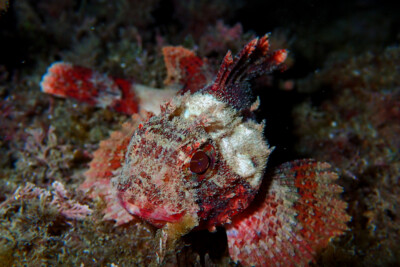red scorpionfish
| Scientific name | Scorpaena scrofa |
|---|---|
| Descriptor | Linnaeus |
| Year of description | 1758 |
| IUCN category (World) | LC |
| Family | Scorpaenidae |
| Genus | Scorpaena |
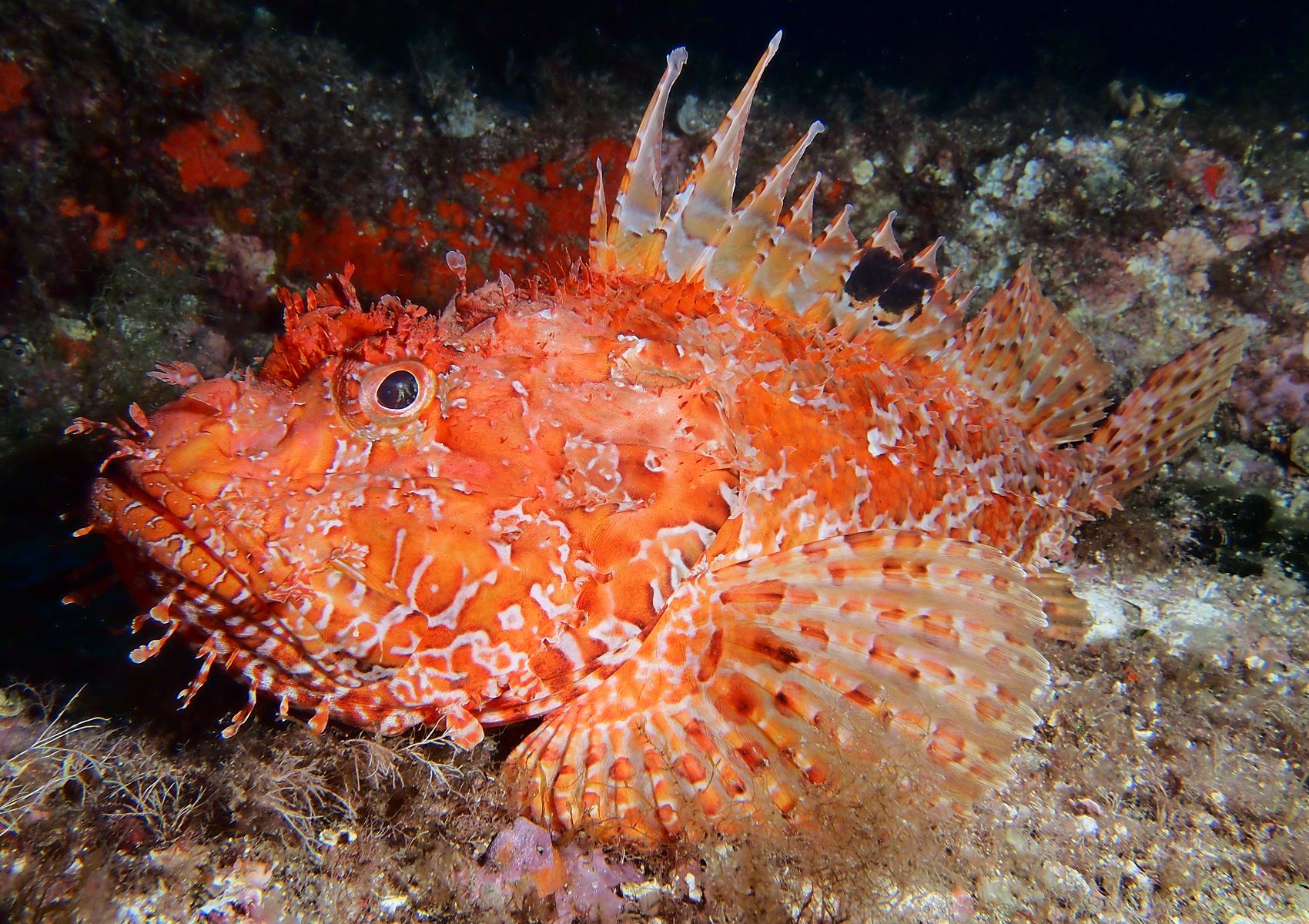

Introduction
The red scorpionfish, also known as the red rockfish, can be found in a large part of the western Atlantic Ocean and the Mediterranean Sea. Like its cousins, this fish is a predator that blends into its surroundings to ambush its prey. Very discreet, it spends a large part of its time motionless among the rocks.
Some spines of its dorsal fin are venomous and can cause accidents if touched. It is one of the potentially dangerous species in case of contact in the Mediterranean Sea.
This fish, particularly appreciated for its taste, is among the most well-known species in the Mediterranean region. Overfishing of individuals that are too small has led to its scarcity in the entire area. It is targeted by both recreational fishing and semi-industrial and artisanal professional fishing (bottom trawls, gillnets, longlines, beach seines, traps, lines).
Populations in the Atlantic Ocean seem to be in better shape. A population of red scorpionfish found in South Africa is also believed to correspond to this species.
Who is it?
Morphology
-
Type
-
Average size30 cm
-
Maximum size58 cm
-
Longevity25 year
-
ShapeOvoid
-
Mimicrystone
-
Patternmottling
-
Type
-
Average size30 cm
-
Maximum size58 cm
-
Longevity25 year
-
ShapeOvoid
-
Mimicrystone
-
Patternmottling
How to recognize This fish ?
The body and fins are red to reddish with darker marbling. The coloration can vary depending on the region, with individuals displaying yellowish or pink tones. A black spot is usually present on the dorsal fin, between the sixth and eleventh spine.
Like other scorpionfish, it has a massive head covered with small spines. Flaps of skin resembling seaweed are present on some spines, under the lower jaw and on the lateral line. The mouth is protractile.
It has 11 to 12 spines on the dorsal fin and 3 on the anal fin.
Sexual dimorphism
Females are larger than males. They also live longer.
Behaviour & Life cycle
-
dietcarnivorous
-
Sociabilitysolitary
-
territorialNo
-
Way of livingdiurnal
The red scorpionfish is a benthic species (living near the bottom). This predator uses its camouflage to surprise its prey by quickly sucking them into its mouth when they are nearby.
It is a solitary, sedentary, and probably territorial fish that feeds on fish (especially gobies), crustaceans, and mollusks. Although rare, individuals may sometimes be encountered half-buried in the sand.
Reproduction
-
Reproductionovipare qui pond sur substrat caché
Males mature earlier than females. In females, the first specimens can reproduce from 25 centimeters, compared to 29 in males.
The eggs are pelagic and measure about 1 mm. Reproduction occurs at night to protect the spawning as much as possible from predators.
Risks for humans
-
VenomousYes
This species is venomous and can cause accidents upon contact. The risks for bathers are limited as the species lives close to the bottom, in relatively deep areas.
However, caution should be exercised when snorkeling or diving, and one should remain vigilant when observing scorpionfish, regardless of the species. Most accidents occur among fishermen who, in handling the species, may exert pressure on the spines and therefore be stung by the venom. To avoid this discomfort, fishermen should not handle this species without protection.
The sting is particularly dangerous for allergic or cardiac individuals. Beware, the venom remains active for up to two days after the fish's death, especially if kept cool after being caught.
What to do in the event of a sting?
in case of sting, the following rules should be followed, in this order:
- Isolate the victim from the danger and quickly remove him or her from the water
- Call for help
- Lay the victim down in a half-sitting position and avoid any effort
- Immobilize the affected limb
- Clean the wound
- The venom of this species being thermolabile, it can be neutralized if it is submitted to a temperature of about 45 °C. It is therefore possible to heat the wound. This popular technique should be practiced with great care so as not to aggravate the wound by burning it. It is advisable to immerse the affected limb in hot water.
- If the puncture is too deep, heating the wound will be less effective.
Sometimes the sting can cause discomfort or even loss of consciousness in the victim. The stings are usually very painful.
Origin and distribution

Geographic distribution & Conservation
Although classified as a species of least concern by the IUCN, several scientific studies published since the 2000s show a decrease in populations in different areas, especially in the Mediterranean Sea.
There is still little precise information on the biology and ecology of this species despite its commercial importance. Between 1960 and 2010, in the Adriatic Sea, the average size of large individuals decreased by 20%, and the weight by 40%. Specific and more restrictive national legislations have already led to a reversal of the trend in some regions.
To ensure the sustainability of red scorpionfish populations, we recommend releasing any individual below 30 centimeters if caught. Similarly, we advise against consuming red scorpionfish that are undersized.
Conservation status of populations (IUCN)
What is its habitat?
Natural environment characteristics
-
Depth15 - 500 m
Biotope presentation
In the Mediterranean, this species is mainly found between 15 and 150 meters, but can be seen at other depths. Juveniles may live at shallow depths, near the coasts.
This scorpionfish inhabits various biotopes, including rocky, mixed, and muddy areas.
Species of the same biotope
To go further
Sources & Contributions
Participation & Validation
The Fishipedia team and specialist contributors are committed to providing high-quality content. However, although the information comes from scientific sources or testimonials from specialists, the cards may contain inaccuracies.

Benoit Chartrer

Julie Magnus
Translation
Translation done with the valuable contribution of our translators, who make this information available to a wider audience. We sincerely thank them for their commitment.
Bibliographic references
Age, growth, and mortality of largescaled scorpionfish (Scorpaena scrofa, Linnaeus, 1758) in the eastern Adriatic Sea - Sanja Matić-Skoko - Miro Kraljević - Armin Pallaoro - Jakov Dulčić - Internacional Society of Zoological Sciences - 2008.
Embryonic and larval development of largescaled scorpionfish Scorpaena scrofa (Scorpaenidae) - Tanja Šegvić Grubišić - Leon Katavic - Ivan Bartulovic - Vlasta Pallaoro - Jakov Dulčić - Cybium - 2008.
The biological traits of the large red scorpionfish, Scorpaena scrofa: Temporal and ontogenetic dynamics - Sanja Matić - Jakov Dulčić - Armin Pallaoro - Miro Kraljević - Nika Stagličić - Elsevier Ltd - 2015.
FAO - Scorpaena scrofa - J. Martinez - D. Lloris - FAO Fisheries Synopsis - 1999.
Scientific partners
Tags
#Scorpaenidae
#Scorpaena
#Faille
#zone mixte
#scorpionfish
#Mediterranean Sea
#Océan Atlantique Est Afrique - Angulhas
#Océan Atlantique Est Afrique - Bengala
#Océan Atlantique Est Afrique - Golfe de guinée
#Temperate Eastern Atlantic Ocean
#Océan Atlantique Est Afrique - Transition & Cap Vert
#Eastern tropical Atlantic Ocean
#Corsica
#Canary Islands
#Sardinia
#Sicily
Species of the same family
Same genus
Species of the same biotope
